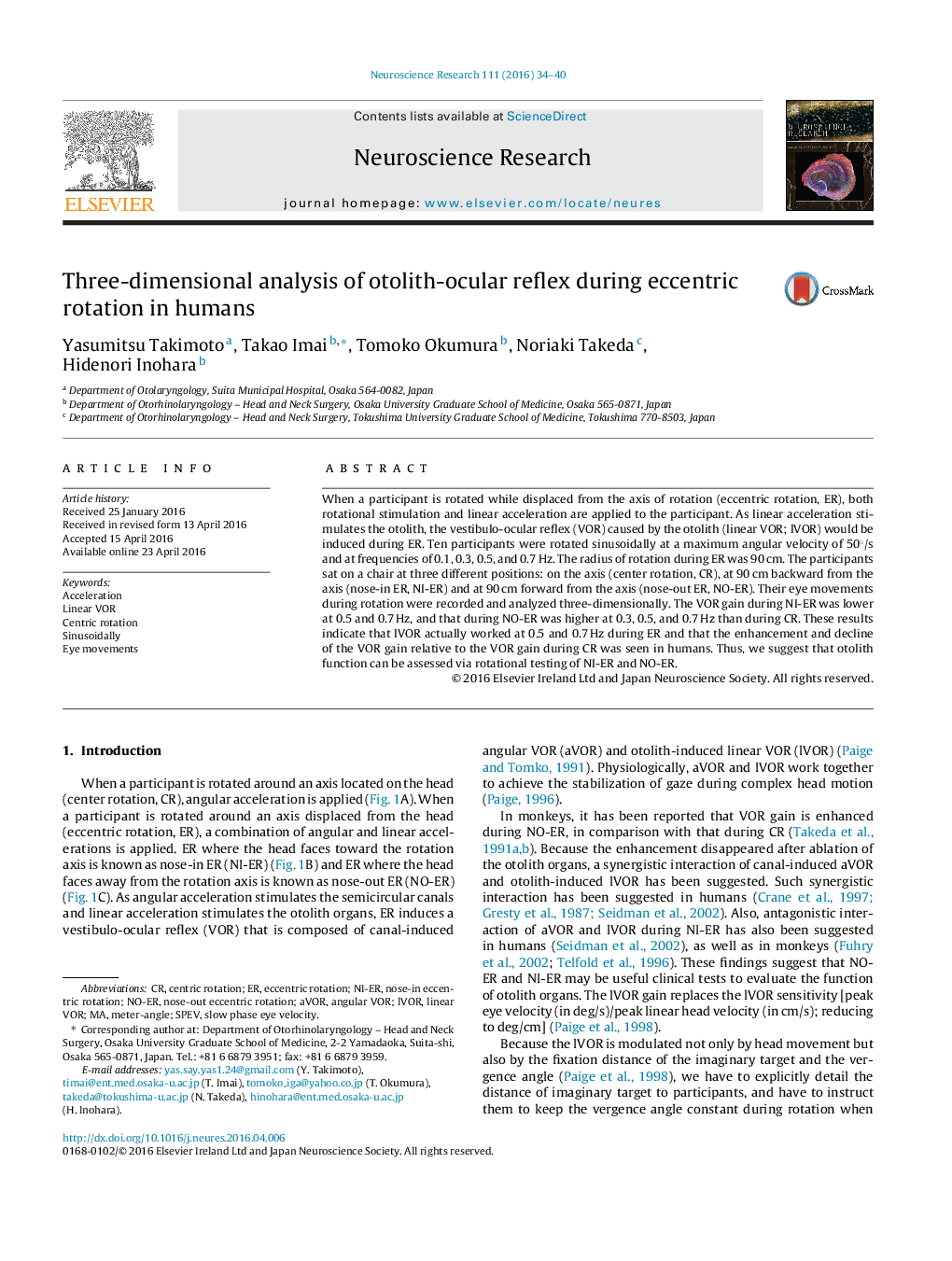| Article ID | Journal | Published Year | Pages | File Type |
|---|---|---|---|---|
| 4351304 | Neuroscience Research | 2016 | 7 Pages |
•Eye movements during eccentric rotation (ER) were analyzed three-dimensionally.•We show that linear vestibulo-ocular reflex worked at 0.5 and 0.7 Hz during ER in humans.•We can assess otolith function by rotational testing of ER.
When a participant is rotated while displaced from the axis of rotation (eccentric rotation, ER), both rotational stimulation and linear acceleration are applied to the participant. As linear acceleration stimulates the otolith, the vestibulo-ocular reflex (VOR) caused by the otolith (linear VOR; lVOR) would be induced during ER. Ten participants were rotated sinusoidally at a maximum angular velocity of 50°/s and at frequencies of 0.1, 0.3, 0.5, and 0.7 Hz. The radius of rotation during ER was 90 cm. The participants sat on a chair at three different positions: on the axis (center rotation, CR), at 90 cm backward from the axis (nose-in ER, NI-ER) and at 90 cm forward from the axis (nose-out ER, NO-ER). Their eye movements during rotation were recorded and analyzed three-dimensionally. The VOR gain during NI-ER was lower at 0.5 and 0.7 Hz, and that during NO-ER was higher at 0.3, 0.5, and 0.7 Hz than during CR. These results indicate that lVOR actually worked at 0.5 and 0.7 Hz during ER and that the enhancement and decline of the VOR gain relative to the VOR gain during CR was seen in humans. Thus, we suggest that otolith function can be assessed via rotational testing of NI-ER and NO-ER.
Graphical abstractFigure optionsDownload full-size imageDownload high-quality image (119 K)Download as PowerPoint slide
